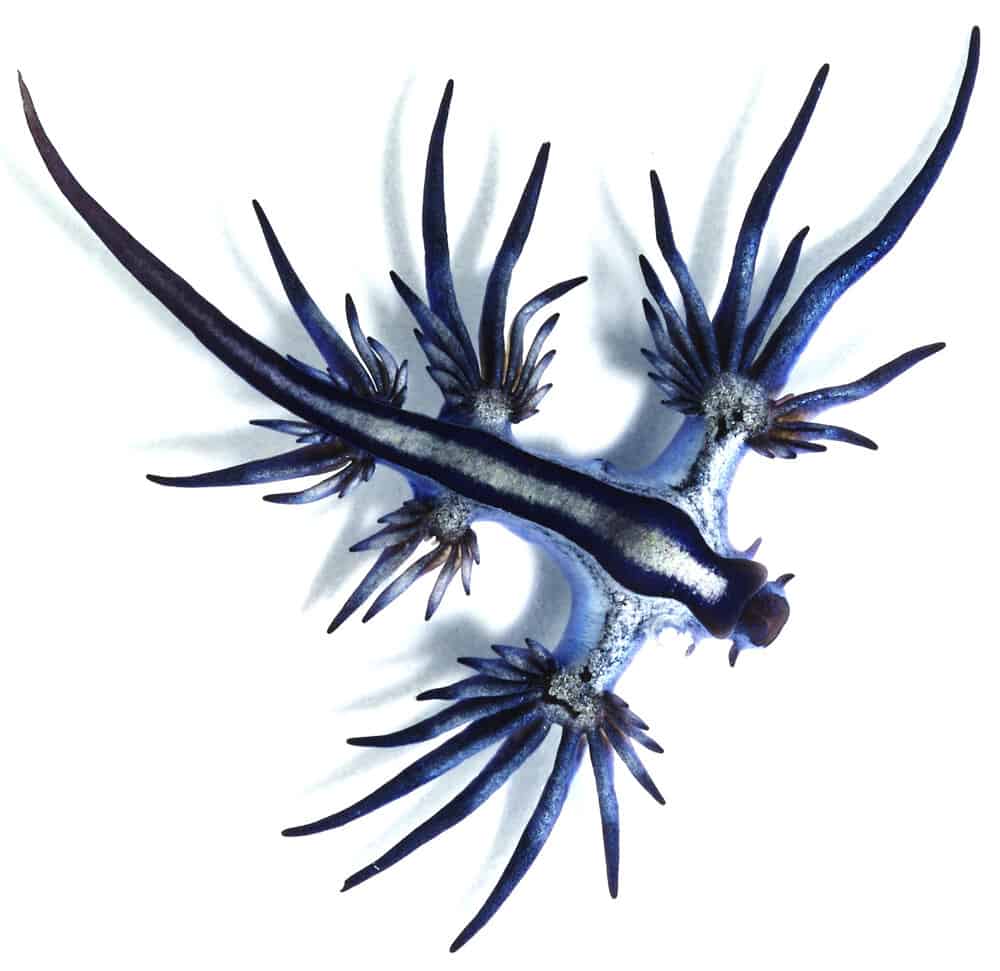Your cart is empty


As the chatter of my keyboard clashes with the crackle of the fire, the clocks have drifted an hour from summer savings and the Scottish nights are drawing in. The first winter storm has battered our shorelines, ripping the memory of summer from now barren branches. I’m settling into an adjusted routine, trying to make the most of limited daylight, juggling the desire for the briskness of the great outdoors, with the necessity to write, study, read, plan, edit; the delicate dance of creating a job from the unfettered joy of a passion.
My biggest challenge this month was narrowing down potential stories from so many worthy candidates. I won’t even have time to cover the discovery that platypus are biofluorescent, or talk about a species of chameleon last seen a hundred years ago and recently re-discovered in Madagascar. Let’s dive straight into this month’s eclectic mix, from plastics in our oceans to alleged human rights abuses funded by the WWF.
It has been argued by scientists and journalists alike, that the concerted focus on plastic pollution — despite being well-intentioned and necessary — has distracted and diverted focus and resources from the more significant threat of climate change. While I share similar sentiments, the extent and impact of plastic pollution on our planet traverses an escalating course as science plumbs ever greater depths of understanding.
The Great Pacific Garbage Patch — discovered in 1997 to beand twice the size of Texas — was at the cusp of a growing public awareness of the damaging impact plastics were having in our oceans. While a 2018 investigation showed that as much as half of the items in the patch were related to industrial fishing — and not from household use — a UNESCO summary on marine pollution identified that every square kilometre of ocean contained 46,000 individual pieces of floating plastic (this had been reported in a 2006 UN investigation). This contributes to the deaths of 100,000 marine mammals and more than a million seabirds every year, but the true impacts are only now being realised, and it has more to do with what we can’t see.
The increased awareness of microplastics from early 2012, and the subsequent removal of micro-beads from products in many countries around the world, only hinted at the problem before us. We are now starting to understand the gravity of microscopic plastic particles on our natural ocean cycles.
Researchers from the University of Plymouth tested the impact of laundry lint on the widely distributed Mediterranean mussel (Mytilus galloprovincialis), monitoring the physiological and biological effects. Similar previous studies had focused on regular shaped industrially produced microplastics, which are rejected by most filter-feeding bivalves (a large class of marine and freshwater molluscs enclosed by hinged, hard shells). However, irregular shaped micro-fibres are more consistently ingested, and this can lead to a host of implications: tissue deformity, swelling, liver damage, and a reduction in the mussels’ ability to filter food particles, as well as DNA impairment in blood cells.
When speaking to sciencedaily.com about the research, lead author Dr Andrew Turner, stated that “the laundering of clothes and other textiles is among the most significant sources of synthetic microfibers within the environment. This study shows for the first time what harm they can cause, and it is particularly interesting to consider that it is not just the fibres themselves which create issues, but also the cocktail of more harmful chemicals which they can mobilise.”
As outlined in the study, the concentrations which caused impairment in the mussels were at higher levels than would naturally occur at this point in time. However, testing was undertaken over a seven-day period, and this research highlights the need to understand low-dose, long-term exposure. Bivalves are a vital component of the marine and freshwater food web, and have been an important element of aquatic communities for the last 500 million years.
Personally, I would like to see it incumbent on the manufacturers of laundry machines to fit all models with filters able to extract microfibres from grey water — a simple, preventative solution. However, some research suggests that the act of wearing clothes releases more microfibres than washing them. We need to see an emphasis on breaking the cycle of environmental microplastic exposure, alongside a greater emphasis on creating tougher materials, less prone to shedding. Maybe part of the solution is to increase the proportion of natural fibres in your wardrobe.
Read a content summary here | Read the source paper in Chemosphere
*UNESCO marine pollution summary here
While we are talking about marine systems, the impeccable journalism offered by The Atlantic, highlighted the potentially catastrophic consequences for neuston in ocean clean-up efforts. Neuston are an assemblage of organisms, creating a vast, complex ecosystem attached to, or on the surface layer of water. Author Dr. Rebecca Helm describes the collective communities as a “living island” in the ocean, with life forms ranging from bacteria, algae, and plankton, to snails and brightly coloured nudibranchs (a type of sea slug), which look like miniature mythical creatures, aptly fitting their common name — blue sea dragons. The full spectrum of life existing with a neuston is vast, and feeds into the greater marine web, providing a food source for larger taxa such as fish and turtles.
The threat, as described in detail by Helm, lies in the implementation of the Ocean Cleanup project, which is a static filtering system using ocean currents to remove plastics, by filtering the surface layer with three meters deep, 600 meter long nets. These same ocean currents govern the passive migration of neuston ecosystem. Helm claimed that the target to reduce the amount of plastic in the ocean by 90% by 2040, would result in destroying 90% of neuston populations.

This story was first published in January 2019 and picked up by newspapers around the world. Ocean Cleanup published a response a couple of weeks later, refuting many of the claims. They cited research that these communities are adapted to high loss rates, and hence would quickly recover any impacts from the clean-up operation. Further to this, it was stated that varying distributions between plastic occurrence and neuston abundance reduced possible interactions. Of course, it’s only natural to wonder if they can recover fast enough to support the other species which rely on them as a food source.
The real-world implications will only be borne out with time, but we are well aware of the devastation by-catch has ravaged upon our ocean fish stocks over years of harvesting. In a way neuston may become a bycatch of plastic harvesting.
As far as I can tell, there have been no operational changes from the original implementation plan which began in 2019. The project has raised more than $30 million, but faced difficulties with their initial deployment, attracting critics across the press suggesting that the project may be a pipe dream. Whatever the outcome, it raises an important consideration for similar clean-up efforts.
Read the original article here | Ocean Cleanup response here
I was of two minds whether to include this story in our monthly dispatch, because it is such a deeply involved topic, and I couldn’t possibly do it justice in the limited space I have here. However, despite incredible investigative work more than a year ago by Buzzfeed journalists, and a recent funding cut to the World Wide Fund for Nature (WWF) and World Conservation Trust (WCF) by the United States government, the story hasn’t had the attention it deserves. This short insight should serve as a catalyst to dive into the associated links and work already undertaken by other publications.
For me, this story began just prior to the Buzzfeed exposé on March 4th, 2019. I had a call enquiring about my availability for a film project, to produce an instructional video on human rights — the intended audience was rangers in various parks across Africa. Although not explicitly expressed, there was a clear indication that known incidents had led to the enquiry. For various reasons the project ran cold, but shortly after this Buzzfeed released a multipart series entitled: WWF’s Secret War. This extract from the opening article in the series encapsulates the nature of the exposé:
“In national parks across Asia and Africa, the beloved nonprofit with the cuddly panda logo funds equips and works directly with paramilitary forces that have been accused of beating, torturing, sexually assaulting, and murdering scores of people. As recently as 2017, forest rangers at a WWF-funded park in Cameroon tortured an 11-year-old boy in front of his parents, the family told BuzzFeed News. Their village submitted a complaint to WWF, but months later, the family said they still hadn’t heard back.”
Although the series led to an overhaul of the human rights policies within the WWF, the story was resurrected a few months ago, when a 24-year-old man died in Nepal after being detained by guards at a wildlife park funded by the WWF. According to the recent Buzzfeed update on the story, he was allegedly tortured during his time in custody. This followed reports of forceful evictions of Indigenous people around Chitwan National Park borders, including the burning and destruction of homes.
Unrelated to the case in Nepal, the Department of the Interior (DOI) in the United States had launched an investigation into similar allegations in central Africa. In a leaked memo dated September 18th 2020, funding offered under the Central African Regional Program for the Environment (CARPE) to several environmental organisations — including the WWF and the Wildlife Conservation Society (WCS) — has been halted. The memo exposed an investigation into allegations that “recipients of wildlife conservation funds through FWS and USAID had funded organisations and some sub-elements whose employees or agents at various times over the last decade, were reported to have committed rape, murder, torture, and abuse.” The DOI was unable to ensure taxpayer funding would be spent “responsibly and consistently with all laws, rules and regulations,” and as such, no further funding would be granted.
The WWF received $333 million from the U.S. taxpayer in the decade leading up to 2019, making this funding retraction a damning of the most well-known wildlife organisation in the world.
Read the DOI memo | Buzzfeed series. WWF Secret War
Consequences of a shifting climate:
As temperatures warm, research has shown that butterfly species in the Lake District, United Kingdom, are retreating to higher altitudes. What happens when they run out of mountains to climb? Read the story in the Guardian Newspaper.How do fish populate remote bodies of water?
A question long-asked by curious naturalists and fishers, recent research shows how fish eggs can survive ingestion by ducks.
BYRON PACE | INTERNATIONAL EDITOR
Byron Pace found himself hunting and fishing from almost as soon as he could walk, his father laying the foundations for a passion centered on exploring the outdoors. This would become the guiding force for most of his life decisions. He began creating content for international hunting publications soon after leaving school, continuing through his studies in economics, graduating with first class honors. A desire to explore would see him involved in big game capture in Africa, building up an experience of wildlife management at home and abroad through further study and time on the ground. Today, he and his brother, Darryl, run their own film production company and podcast, Into The Wilderness, focused on improving the understanding of conservation and the management of wildlife around the globe.
Related Stories



Latest Stories


